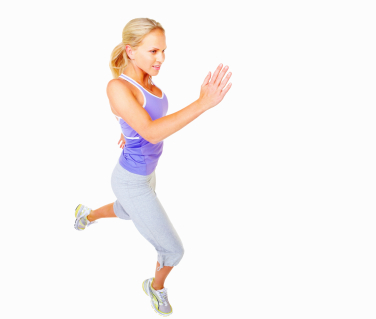The Most Important Running Stretches

Is it good for you or not?
Do you stretch before and / or after your run?
Which stretches do you do, if any?
To start of with answering the first question : yes, stretches, if performed properly, are good for you. This leaves the last two questions as topics for this page:
Stretching and strengthening before and / or after the run ?
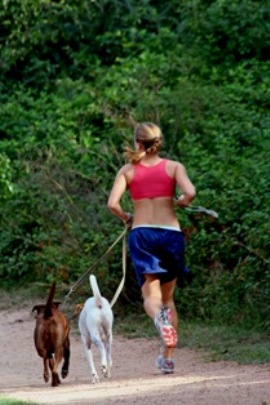
Some of us do not stretch at all. Some do so only before a run. Some only after. And not many of us know what is what, and why we should do which stretches. So, let's try and clear things up a little bit...
Let's go through the bad, the ok, the good and the great of running stretches.
What's Bad When It Comes to Running Stretches?
The bad approach to stretching is to do none at all. And to completely ignore the idea of needing a warm-up or a cool-down. Is this you? Then you are quite happy to go hell for leather right out of the gate. Also, please read on, you may learn a thing or two in the remainder of this article.
Without spending much more time on this approach, it is clearly not the right way to go about it and at some point in the near future this will catch up with you in form of an injury. Just you wait.
What's OK When It Comes to Running Stretches?
The OK approach is to continue to ignore running stretches. I'd say the "What's OK" group covers at least 95% of the running population.... What set's apart the OK approach from the Bad approach is that you understand that your muscles need some warming up and cooling down.

In between, you can go hard, but you ensure that you have a warming-up and cool-down of some kind.
This is not terrible. And you know what? When I am doing an easy short run I sometimes follow this approach as well. I just run easily without spending much time thinking about stretching. But it is not ideal. And especially when doing faster running (a session or a workout), you need a better way to warm-up and cool-down. So, let's move on to the good and great of stretching.
What's Good When It Comes to Running Stretches

Doing a workout such as a tempo or interval run? Then, after the initial 15-20 minutes of easy running, you do a few strides. Then you do your workout. You finish with an easy 10-20 minutes of easy running as a cool down.
In addition to that, you do strength work. These exercises focus on improving your leg strength and your core, predominantly.
Why? Many reasons.
Strengthening work means you help prevent injuries.
Your legs become stronger, meaning each stride is just that little bit more powerful... Your running will become more economical, you will be able to keep the same high speed for longer, etc., etc.
So, what are some of the strengthening exercises you should consider? There are many options. Many websites will tell you to do squats and lunges. I fully agree. They are very important and I do them regularly.
In addition to those, I'll share some key strengthening exercises here that are focused on the lower legs:
Heel Drops
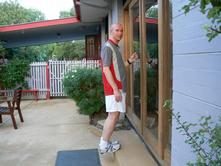
Stand on a curb with your front foot.
Drop your heels.
Slowly count to five and lift again.
Repeat five to ten times.
Calf raises
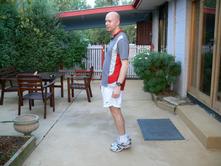
And for preventing and/or battling shin splints.
Stand on the floor and lift your heels.
Slowly count to five and drop again.
Repeat five to ten times.
Whatever you do, wherever you are, do me a favour and add these heel drops and calf raises to your strengthening routine. Your lower legs will thank you for it!
Check out my strength training for runners page for more information on strength training routines.
What's Great When It Comes to Running Stretches
Now, what does great look like? It includes all of the above, i.e. the warm-up, the cool-down and the strengthening work. Then in addition, you do what is called a dynamic warm-up.
Before we get into that, let's first cover off on what not to do: static stretching.
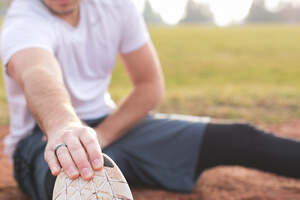
When you are doing a static stretch, you are stretching a muscle to its furthest point. Then you hold that for a certain amount of time (10-20 seconds). Now, why am I not a fan of static stretching? You focus on one muscle at a time.
Put simply, there is very little evidence to suggest it helps. And it can do more harm than good. If you are not careful, you can hurt yourself by starting to aggressively stretch cold muscles.
A much better alternative is dynamic stretching.
So, how is dynamic stretching different? Key differences are....
A dynamic stretch would include more than one muscle at a time
You focus on gentle movements
You don't hold the stretch, there is movement.
So, what is a dynamic warm-up and why is it important?
A dynamic warm-up gets you ready to start running. So many of us do office jobs. We sit for hours and hours on end. Just getting up and getting out of the door is not enough to get ready for a run. Throw some tough static stretches of cold muscles into it and you (in my view) increase your injury risk, rather than decrease it. A dynamic warm-up however, helps your body prepare for a run. You start moving, losening the legs, increasing the heart rate and blood flow gradually...
Dynamic Warm-up Example
A good example of a starting routine is: 1) do a lunge matrix (see video below)
2) do leg swings back and forth
3) do leg swings laterally (left to right in front of the body)
4) do some squats
5) do a few butt-kicks and high knees
When you are not used to lunges and you want to implement a lunge matrix in your routine, then make sure you build up gradually. Don't immediately do 10 per exercise, maybe start with 4 and build up from there.
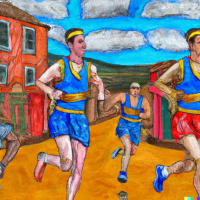
And a dynamic warm-up does not need to take a lot of time. Within 5 minutes you can do your lunges and leg swings and some other exercises. That is a very small investment of your time to do a better workout, run better and reduce your injury risk. Make it part of your standard warm-up routine!
So, that's what the good and the bad of stretching look like. Hope I convinced you that add some stretches into your running routine!
Don't leave me now and keep on browsing the pages below!
Home > Running Training > Running Stretches



